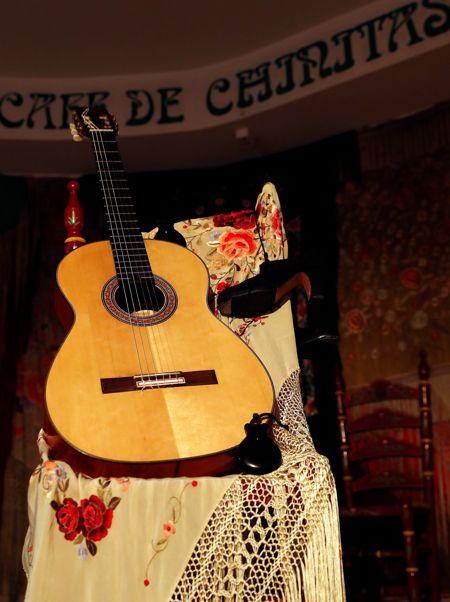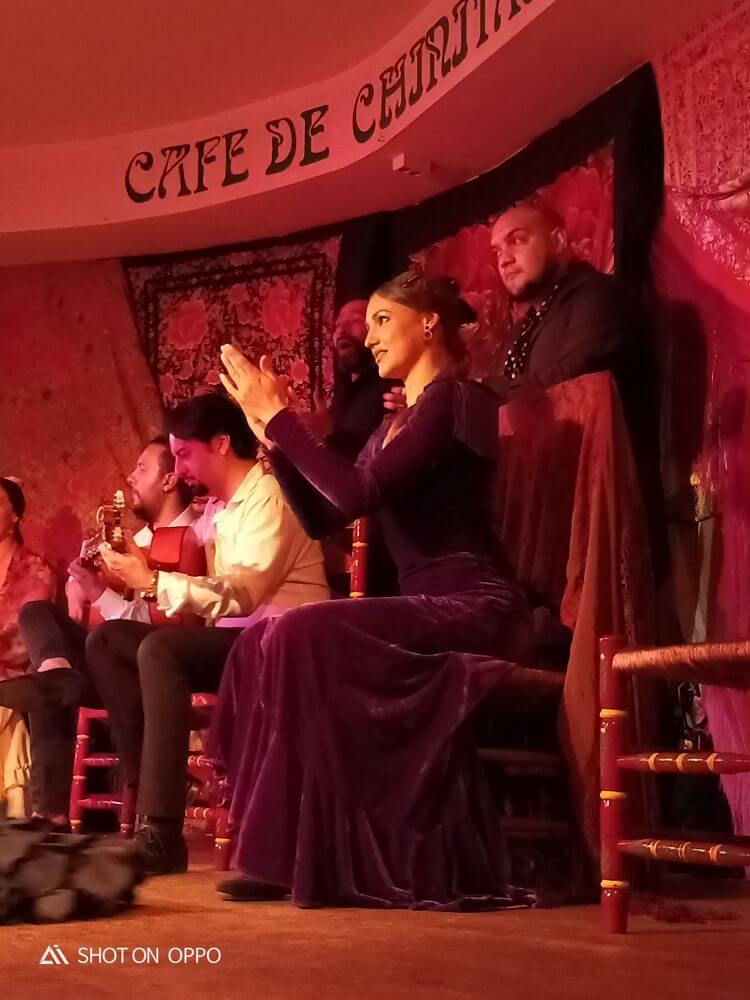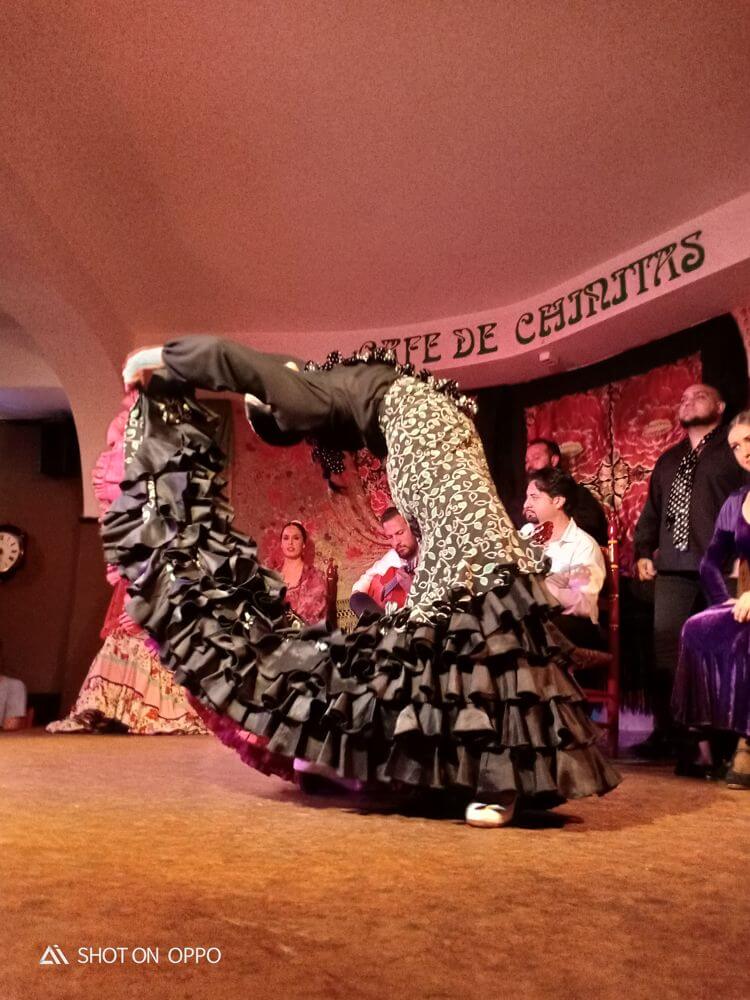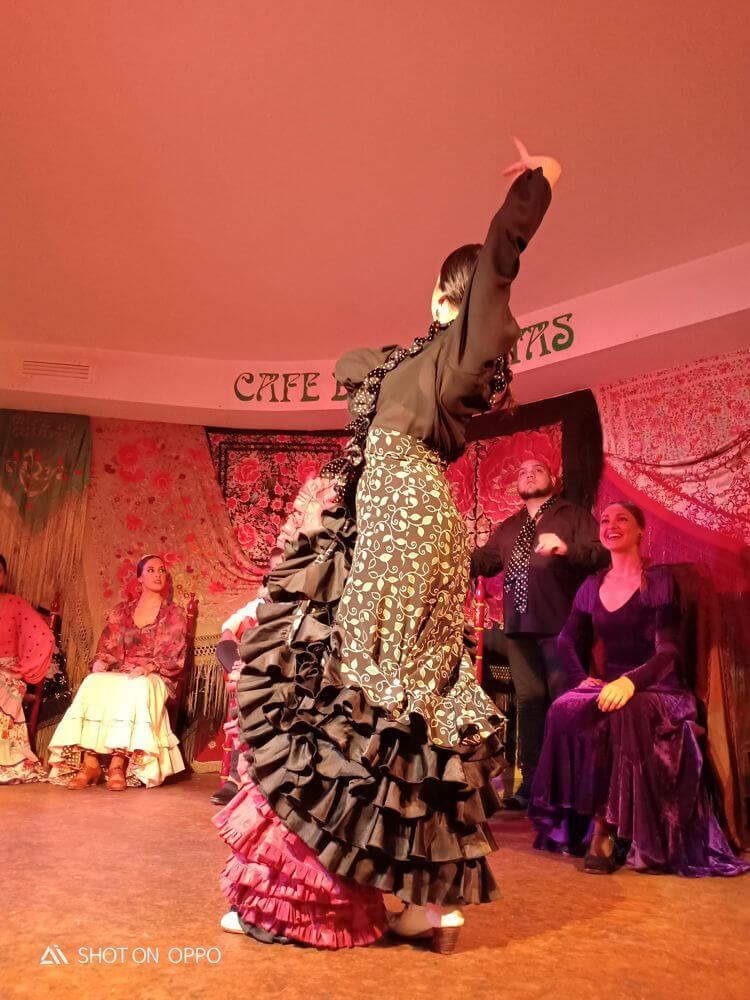Flamenco show in Madrid
The “Cantante” Café
Glass lamps
and green mirrors
Upon a dark stage,
the Parrala has
a conversation
with death.
It calls her,
but she doesn’t come,
and it calls again.
People
breathe in the sobbing.
And in the green mirrors,
long silk curtains stir.
CAFÉ DE CHINITAS, THE ORIGIN OF FLAMENCO

Considered part of the UNESCO world heritage since the year 2010, flamenco, as it has evolved over the last two hundred years, has become a crucial part of the culture of Spain.
Though it has uncertain origins, flamenco’s roots can be traced back to the music and theater of various cultures throughout history. What we do know for sure is its basis in the area of Andalucia, more than 200 years ago. The mix of cultures in this region throughout time, combined with the popularity of this type of southern Spanish artistic expression, has made flamenco a completely unique art form, tied closely to the deepest, most soulful of emotions.
Many different tribes have come through the Iberian Peninsula through the centuries, including the Phoenicians, Greeks, Carthaginians, Romans, Jews, Muslims, Goths, and gypsies. All these peoples’ sounds and influences came together in the cantante cafes of the 19th century, especially in Seville, Cadiz, and Malaga. It is in Seville that Silverio Franconetti, one of the founding fathers of the art form of flamenco, lays down the universal structure of flamenco that we know and appreciate today.





